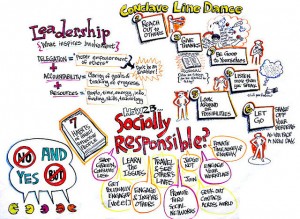7.6 Levels of Social Responsibility
You can see from the sampling of positive and negative obligations that as a communications professional you must weigh a wide variety of considerations when gathering and using information to create a message. The intended audience, the purpose of the message, the intent of the communicator, the ethical considerations, the legal constraints and many other variables help determine how you pursue the information strategy.

As a communications professional you must also conduct your work in the context of a commitment to social responsibility at a number of levels. Because mass communication messages are pervasive and influential, media organizations and professionals are held to high standards for their actions. The social responsibility perspective helps outline how this works.
There are three levels of responsibility that affect your work as a communicator. These are:
-
SOCIETAL: the relationships between media systems and other major institutions in society.
-
PROFESSIONAL / ORGANIZATIONAL: your profession’s and your media organization’s own self-regulations and standards for professional conduct.
-
INDIVIDUAL: the responsibility you have to society, to your profession, to your audience and to yourself.
We’ll examine each of these in turn.

